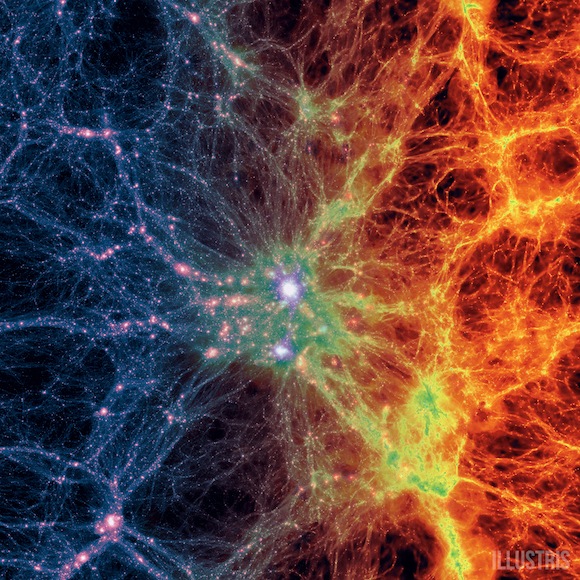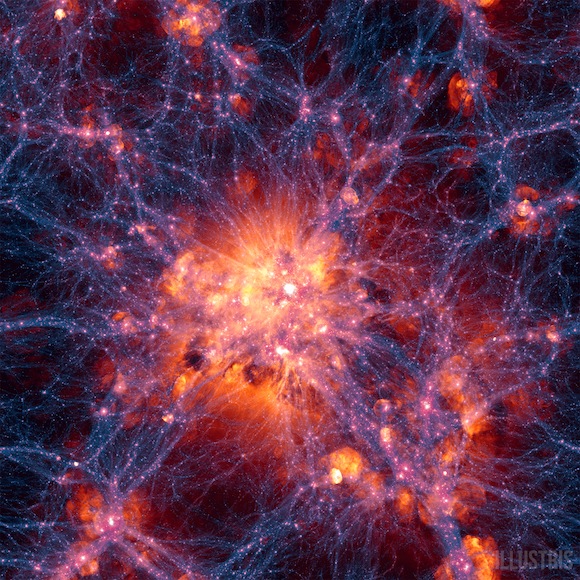Astronomers say they have created “the first realistic virtual universe,” using a computer simulation called Illustris. Check out the video above for a sample. According to a press release from the Harvard-Smithsonian Center for Astrophysics (CfA):
Illustris can recreate 13 billion years of cosmic evolution in a cube 350 million light-years on a side with unprecedented resolution.
This computer simulation begins a mere 12 million years after the Big Bang. When it reaches the present day, its makers have been able to count more than 41,000 galaxies in the cube of simulated space. Illustris has also yielded a realistic mix of spiral galaxies like the Milky Way and football-shaped elliptical galaxies. It has recreated large-scale structures like galaxy clusters and the bubbles and voids of the cosmic web. On the small scale, it has accurately recreated the chemistries of individual galaxies.
Lead author Mark Vogelsberger (MIT/CfA) conducted the work in collaboration with researchers at several institutions, including the Heidelberg Institute for Theoretical Studies in Germany. These results are being reported in today’s issue (May 8, 2014) of the journal Nature.
The team dedicated five years to developing the Illustris program. The actual calculations took 3 months of run time, using a total of 8,000 CPUs running in parallel. If they had used an average desktop computer, the calculations would have taken more than 2,000 years to complete.
Read more about the Illustris project via the Harvard-Smithsonian Center for Astrophysics



Bottom line: Harvard says it has created “the first realistic virtual universe,” using a computer simulation called Illustris. They say this simulation produces many key components of the real universe. They spent five years developing the simulation, which took 3 months to run on high-powered computers. If they had used an average desktop computer to run it, the calculations would have taken more than 2,000 years to complete. That’s in contrast to about 14 billion years for age of the real universe.











